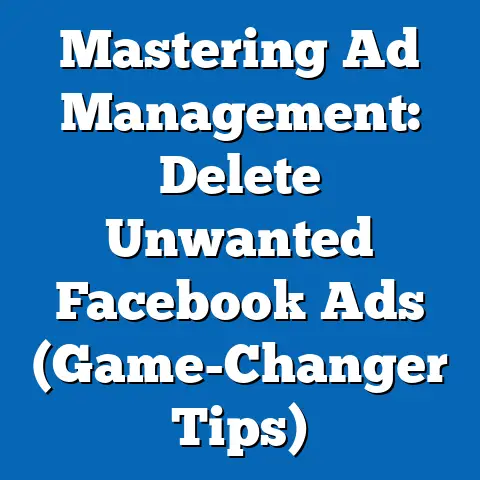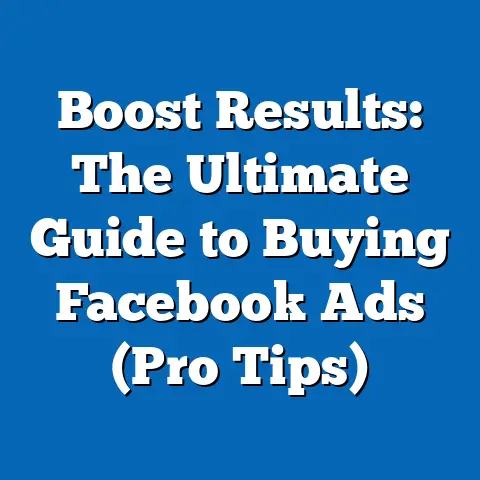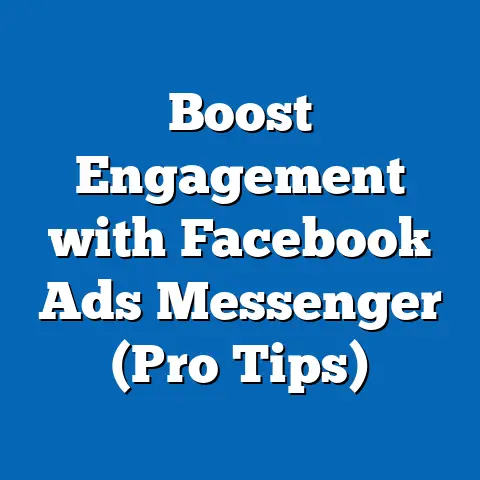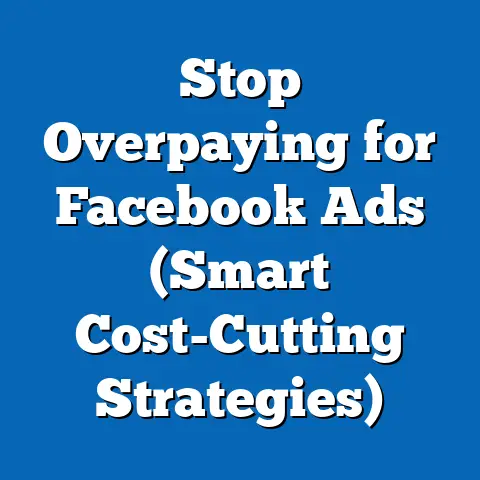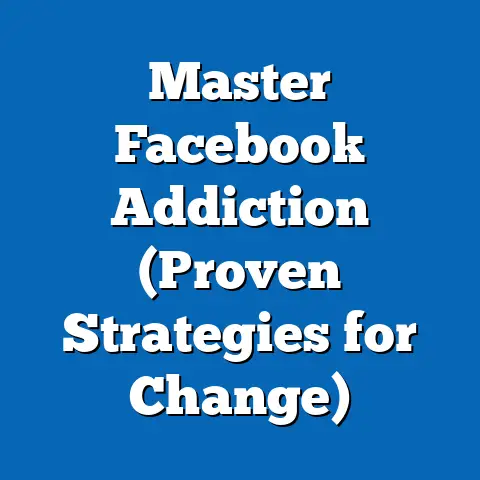Mastering Facebook Lead Ads Privacy Policies (Essential Guide)
In today’s digital age, online advertising is a crucial component of any successful business strategy. Facebook Lead Ads have emerged as a powerful tool for generating quality leads because of their ease of use and seamless integration. I’ve personally witnessed how businesses, both large and small, have benefited from the streamlined process of collecting user information directly within the Facebook interface. It not only saves time and resources but also provides users with a smooth, engaging experience that encourages them to share their information.
However, with great power comes great responsibility. As we collect more user data, it’s absolutely vital that we understand and implement robust privacy policies. Ignoring this aspect can lead to severe consequences, ranging from hefty fines to irreparable damage to your brand’s reputation. Therefore, this guide will delve into the essential aspects of Facebook Lead Ads privacy policies, helping you navigate the legal landscape while building trust with your audience.
Section 1: Understanding Facebook Lead Ads
Facebook Lead Ads are a specific ad format designed to collect information directly from users within the Facebook platform. Unlike traditional ads that redirect users to an external landing page, Lead Ads allow users to submit their contact details, answer questions, and provide other relevant information without ever leaving the Facebook environment.
How Lead Ads Work
The magic of Lead Ads lies in their simplicity. Users see your ad, which typically includes an engaging image or video, compelling ad copy, and a clear call-to-action button like “Sign Up,” “Learn More,” or “Get a Quote.” When a user clicks on the call-to-action, an instant form pops up within Facebook. This form is pre-filled with information the user has already shared with Facebook, such as their name, email address, and phone number, making the process incredibly easy and quick.
The form can also include custom questions that you tailor to your specific business needs. For example, if you’re a real estate agent, you might ask about the user’s preferred location, budget, and timeline for buying a home. The data collected through these forms is then securely stored and can be downloaded or integrated with your CRM system for further follow-up.
Advantages of Using Lead Ads
From my experience, Lead Ads offer several distinct advantages over traditional ad formats:
- Improved User Experience: By keeping users within the Facebook environment, you eliminate the friction associated with navigating to an external landing page. This leads to higher conversion rates.
- Mobile Optimization: Lead Ads are specifically designed for mobile devices, where users often have limited patience for filling out lengthy forms. The pre-filled information and simplified interface make Lead Ads ideal for mobile lead generation.
- Increased Conversion Rates: The ease of use and mobile-friendliness of Lead Ads typically result in higher conversion rates compared to traditional landing pages.
- Data Integration: The collected data can be easily integrated with your CRM system, allowing you to automate your lead nurturing process.
Section 2: Importance of Privacy Policies
Privacy policies are essential documents that outline how your business collects, uses, stores, and protects user data. They serve as a transparent agreement between you and your users, ensuring that they understand how their information will be handled.
The Legal Landscape of Data Privacy
In today’s increasingly privacy-conscious world, adhering to data privacy regulations is non-negotiable. Several laws govern the collection and use of personal data, and businesses must comply with these regulations to avoid legal repercussions. Some of the most important laws include:
- General Data Protection Regulation (GDPR): This European Union law sets strict rules for processing the personal data of EU citizens, regardless of where the business is located.
- California Consumer Privacy Act (CCPA): This California law gives consumers more control over their personal information, including the right to know what data is being collected, the right to delete their data, and the right to opt-out of the sale of their data.
- Other Relevant Regulations: Depending on your location and the type of data you collect, you may also need to comply with other regulations, such as the Health Insurance Portability and Accountability Act (HIPAA) for healthcare data or the Children’s Online Privacy Protection Act (COPPA) for data collected from children.
Implications of Non-Compliance
Failing to comply with data privacy regulations can have significant consequences for your business. These consequences can include:
- Financial Penalties: GDPR, for example, can impose fines of up to €20 million or 4% of your annual global turnover, whichever is higher. CCPA can impose fines of up to $7,500 per violation.
- Reputational Damage: Data breaches and privacy violations can severely damage your brand’s reputation, leading to a loss of customer trust and loyalty. I’ve seen businesses struggle to recover from such incidents, even after implementing significant changes.
- Legal Action: Consumers can file lawsuits against businesses that violate their privacy rights, leading to costly legal battles.
- Loss of Business: In some cases, non-compliance can result in a loss of business, as customers may choose to do business with competitors who demonstrate a stronger commitment to data privacy.
Section 3: Crafting a Compliant Privacy Policy for Facebook Lead Ads
Creating a privacy policy that aligns with Facebook’s requirements and complies with relevant data privacy regulations is crucial for using Lead Ads effectively. Here’s a step-by-step guide:
Key Components of a Privacy Policy
Your privacy policy should clearly outline the following key components:
- Data Collection Methods: Explain exactly what types of data you collect through your Lead Ads, such as names, email addresses, phone numbers, demographic information, and any custom questions you ask.
- Purpose of Data Collection: Clearly state why you are collecting this data. Are you using it to send marketing emails, provide customer support, or personalize user experiences? Be specific and transparent about your intentions.
- Data Usage: Describe how you will use the collected data. Will you share it with third-party service providers, such as email marketing platforms or CRM systems? If so, identify these third parties and explain their role in processing the data.
- Data Retention: Specify how long you will retain the collected data. Will you delete it after a certain period, or will you keep it indefinitely? Explain your data retention policy and the reasons behind it.
- User Rights: Inform users about their rights regarding their personal data. These rights may include the right to access their data, the right to correct inaccuracies, the right to delete their data, and the right to opt-out of certain data processing activities.
- Security Measures: Describe the security measures you have in place to protect user data from unauthorized access, use, or disclosure. This may include encryption, firewalls, access controls, and regular security audits.
- Contact Information: Provide clear contact information for users who have questions or concerns about your privacy policy. This should include a dedicated email address or phone number for privacy-related inquiries.
The Importance of Clear and Concise Language
Your privacy policy should be written in clear and concise language that is easily understandable by the average user. Avoid legal jargon and technical terms that may confuse or intimidate readers. Use simple, straightforward language and break up long paragraphs into shorter, more digestible sections.
Transparency and User Trust
Transparency is key to building trust with your audience. By being open and honest about your data collection and usage practices, you can demonstrate your commitment to protecting user privacy. This can enhance user trust and engagement, leading to higher conversion rates and stronger customer relationships.
Section 4: Integrating Privacy Policies into Your Facebook Lead Ads
Once you have crafted a compliant privacy policy, you need to integrate it into your Facebook Lead Ads effectively. Here’s how:
Placement of Privacy Policy Links
Facebook requires you to include a link to your privacy policy within your Lead Ad form. This link should be prominently displayed and easily accessible to users. You can typically add this link in the “Privacy Policy” section of the Lead Ad creation process.
Additionally, consider including a brief mention of your privacy policy in your ad copy. This can help draw attention to the policy and encourage users to review it before submitting their information.
Informing Users About Their Rights
Within your Lead Ad, you should also inform users about their rights regarding their personal data. This can be done by adding a brief statement to the form that outlines their rights and provides a link to your full privacy policy for more information.
Best Practices for Presenting Privacy Information
Here are some best practices for presenting privacy information in a user-friendly manner:
- Use Clear and Concise Language: As mentioned earlier, avoid legal jargon and technical terms.
- Highlight Key Information: Use bullet points, headings, and bold text to highlight the most important information.
- Provide Examples: Use real-world examples to illustrate how you collect and use user data.
- Make it Mobile-Friendly: Ensure that your privacy policy is easily accessible and readable on mobile devices.
- Test and Optimize: Continuously test and optimize your privacy policy to ensure that it is clear, concise, and effective.
Section 5: Monitoring and Updating Your Privacy Policies
Data privacy regulations are constantly evolving, so it’s crucial to regularly review and update your privacy policies to reflect any changes in the legal landscape or your business practices.
Regular Reviews and Updates
I recommend reviewing your privacy policy at least once a year, or more frequently if there are significant changes in data privacy regulations or your business operations.
Tools and Strategies for Monitoring Compliance
Several tools and strategies can help you monitor compliance with data privacy regulations:
- Privacy Audits: Conduct regular privacy audits to assess your compliance with relevant regulations.
- Legal Counsel: Seek legal advice from a qualified attorney specializing in data privacy law.
- Privacy Management Software: Use privacy management software to automate your compliance efforts and track changes in data privacy regulations.
Communicating Updates to Users
When you update your privacy policy, it’s essential to inform your users about the changes. You can do this by sending an email notification, posting a notice on your website, or displaying a pop-up message when users visit your site. Be sure to clearly explain the changes and provide a link to the updated privacy policy.
Conclusion
Mastering Facebook Lead Ads privacy policies is not just about legal compliance; it’s about building trust with your audience and fostering long-term customer relationships. By prioritizing your privacy policies and ensuring that you are transparent about your data collection and usage practices, you can create an environment where user data is respected and valued. This will not only help you avoid legal penalties but also enhance your brand’s reputation and drive sustainable business growth. So, as you leverage Facebook Lead Ads to generate leads, remember that compliance and transparency are fundamental components of a successful and ethical digital marketing strategy.


